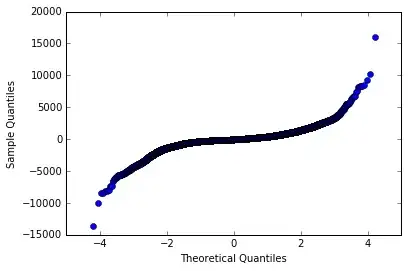Suppose that we have independent samples $X_1, X_2 \sim \text{unif}[0, 1)^d$. I'm asked to show that $Y_1 = X_1$ and $Y_2 = X_1 + X_2 - \lfloor X_1 + X_2 \rfloor$ are also independent uniform samples from $[0, 1)^d$.
I'm able to show that $Y_2$ is uniform on $[0, 1)^d$ by using a convolution for $X_1 + X_2$ and then reasoning about $\lfloor X_1 + X_2 \rfloor$ to obtain the PDF.
However, I'm not sure how to formally show that $Y_1, Y_2$ are independent. This post indicates that identical distribution does not imply independence. I also don't think the joint PDF is calculable given only the marginals without assuming independence?
Any advice on what approach to use to show independence that uses the fact that $X_1, X_2$ are independent?
